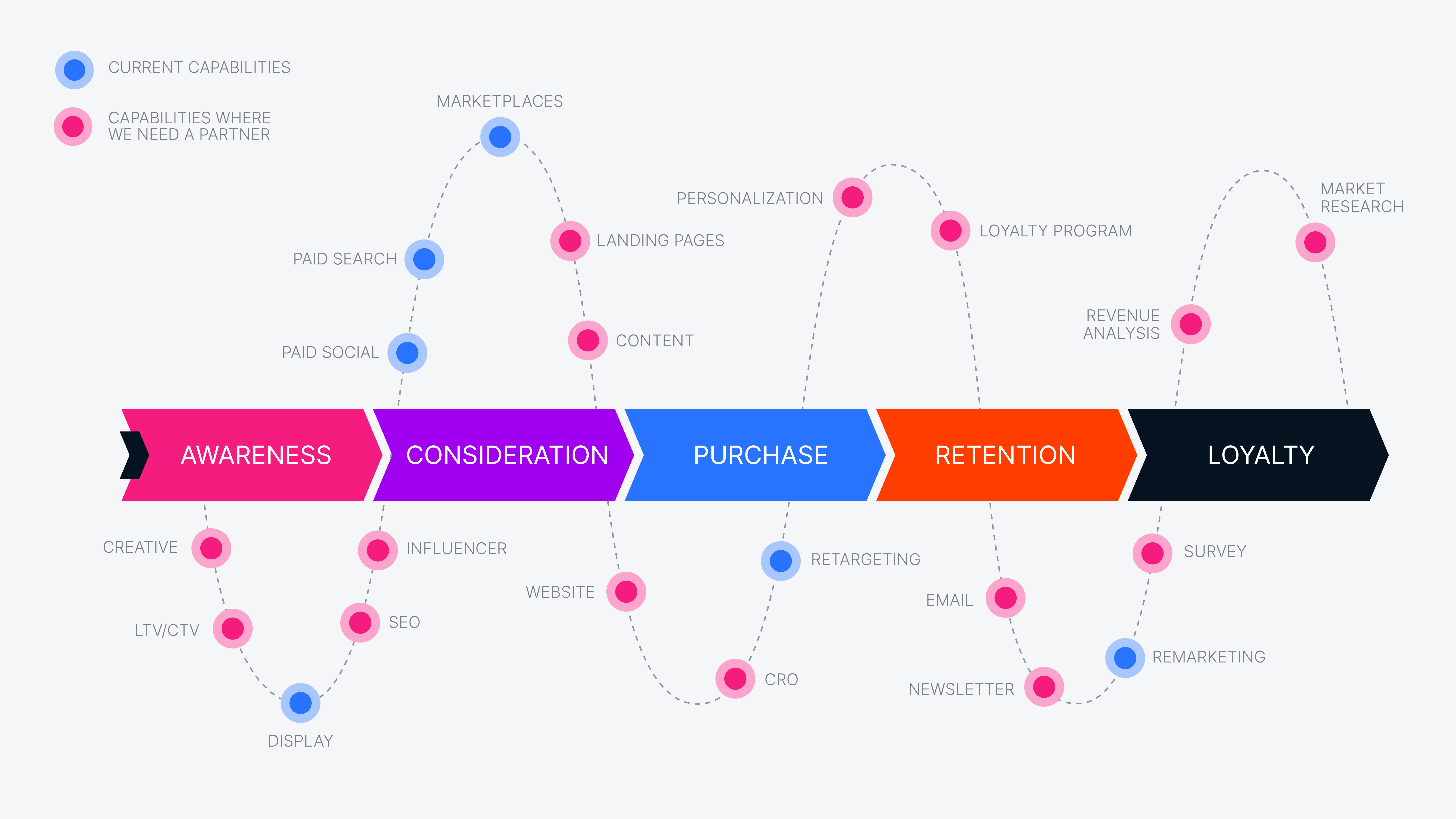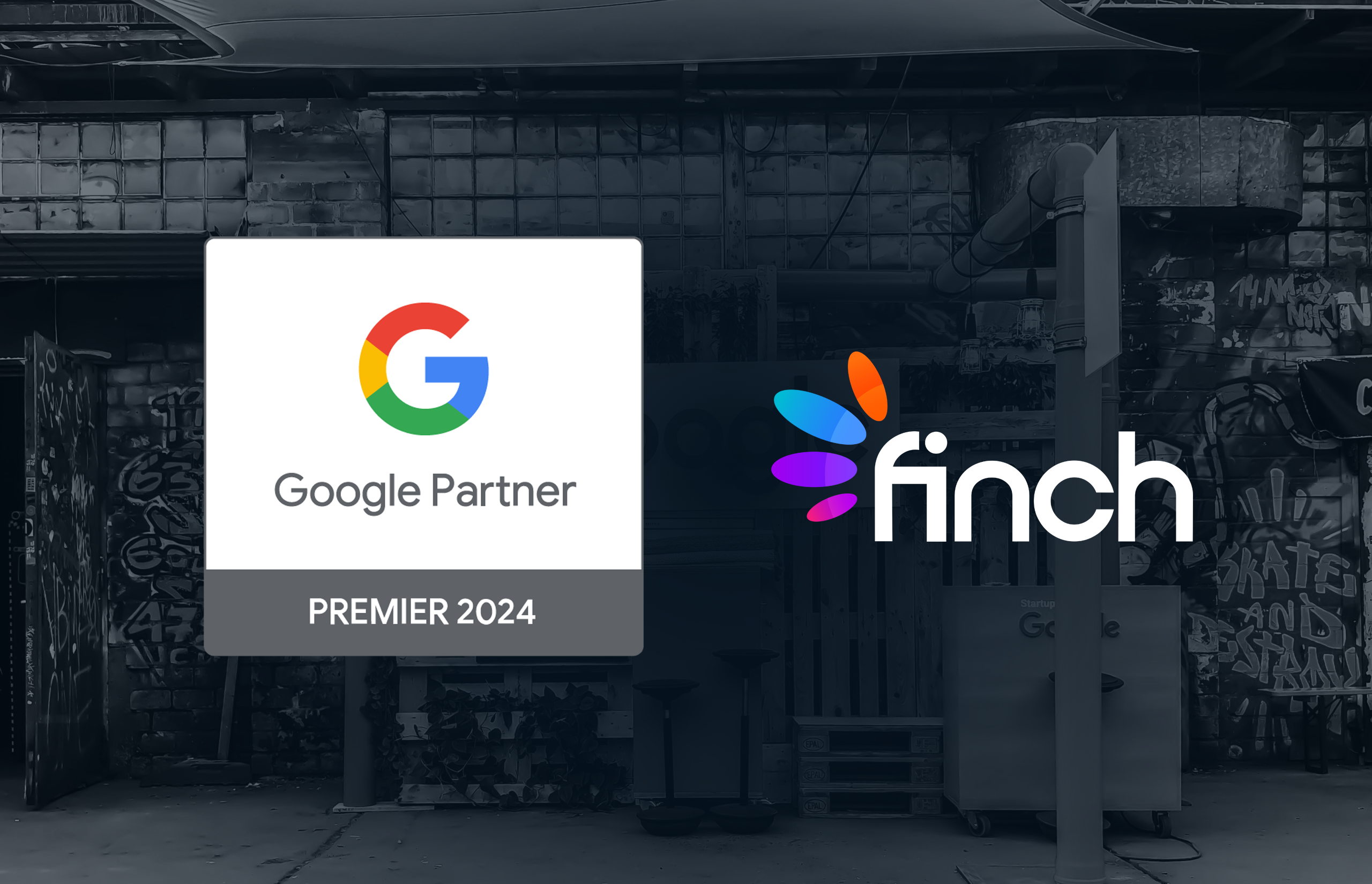Let’s find out. Let’s examine what Google Smart Shopping is and who its automated Smart Shopping campaigns benefit the most in pad search. Let’s also examine why Finch Shopping is a better alternative for eCommerce sellers and marketers who demand more granular control over and better insights into paid media.
At-a-Glance: Smart Shopping vs Finch Shopping
| Google Smart Shopping | Finch Shopping | |
|---|---|---|
| Easy to use | Yes | Yes |
| Bid adjustment | No | Full transparency and control |
| Negative keyword exclusion | No | Yes |
| Search queries reported | No | Yes |
| Best for | Teams with few products, broad goals, and limited need for insights | Any team that wants more control and greater insights |
Get a free, secure audit of your Google Shopping account and see how Finch can help automate and optimize your paid media.
How Google Smart Shopping Works
Google Smart Shopping lets you automate shopping ads and campaigns on Google networks.
You set up a Google Smart Shopping campaign in Google Ads. Set an average daily budget. Set an optional target return on ad spend (ROAS). And select the Google Merchant Center that’s used to manage your product feed.
Google then takes over. It uses artificial intelligence (AI) algorithms to analyze at least a few weeks of your site visitor’s behavior. It’s AI uses that data to place bids and optimize your conversions or ROAS based on your set goals and budget. It automatically combines your supplied images and text to create and shopping and display ads and meet your target goals.
A high ROAS is great, but when removed from the context of margins, ROAS can lose you money.
Who Benefits from Google Smart Shopping?
Google Smart Shopping frees teams that are small or short-staffed from the manual labor of adjusting bids, building audiences, adding negative keywords, and more. Teams save hours and can do other things in the absence of a dedicated paid media manager.
Teams that are struggling to show the value of paid media to upper management benefit. They automate advertising and show increased conversion volume to help justify added staff or budget.
Google Smart Shopping is ideal if you’re selling a small number of products. It’s always better than not doing ads at all. You essentially, theoretically, automatically hit your CPA and/or your ROAS once you’ve set up your campaign. That’s a great outcome for many companies and marketers.
The caveat: You give up capabilities and control and go without insights that many marketing experts aren’t willing to let go of. And if you have a lot of products, you may end up doing more work to automate your campaigns than if you manage your shopping campaign manually instead. The ultimate issue: if the Google Smart Shopping campaign doesn’t meet your goals, analytics is limited and you don’t have an account manager to consult.
When Google Smart Shopping Isn’t Your Smartest Choice
Larger companies and agencies with a lot of products and data-driven approaches find that Smart Shopping doesn’t meet their need for control and visibility into performance. They’re left without insights that could be used for strategic decisions and can’t control which device, network, or location an ad shows on.
Some flat out don’t see the results they expect. A paid manager for a US-based agency shared, “We ran Smart Shopping campaigns, and honestly saw better results with our standard ads for many clients. We eventually went back to using only standard ads only for several clients.”
Smart Shopping Limits Control
When you use Smart Shopping, you control only a few factors and are locked into a “spray and pray” approach.
Smart Shopping only lets you:
- Broadly choose increasing visibility and general conversions or trying to hit your target ROAS.
- Advertise on the Google Search Network, the Google Display Network, YouTube, and Gmail — but all at the same time and as determined by Google’s AI engine, not by you or your team.
- Advertise product groups or categories; it’s not meant for advertising individual product SKUs. You can do smaller groupings in different campaigns, but you do a lot of manual work to set up different campaigns for each. By grouping multiple products, you also can’t give higher bids to more profitable products. Google’s automated bids assume all products in a campaign have an equal profit margin and CPA.
It doesn’t let you:
- Exclude negative keywords from your campaigns.
- Schedule your ads. Google will do that for you too.
- Select which devices to advertise on. It will decide for you and may advertise on devices you may already know don’t convert for you.
- Control performance. If you’re not seeing the performance you want, you’re restricted to adjusting ROAS goals or budget.
- Set the target ROAS at the product level — for promotions, holidays, sales, and to boost individual products, adjusting target ROAS at the product level is vital.
Smart Shopping is best used without simultaneously running standard shopping ads for the same products or product groups. If you run both, your Smart Shopping campaigns have priority and the performance of your standard ads suffers.
The same applies to your Dynamic Remarketing and Display campaigns. If you’re running Dynamic Remarketing and Display campaigns with other providers or even within the Google Display Network, they can very easily interfere with your Google Smart Shopping campaigns.
Smart Shopping Limits Granularity
Not all products are created equal — except in Smart Shopping. Some of your products are bigger moneymakers than others. You may even have good, better, best products with very different margins.
Smart Shopping gives you two options to differentiate between your products.
- Option 1 is to not differentiate. Smart Shopping treats all products in a campaign equally and bids on them the same. You can’t adjust for products with more competition and higher CPCs within a single campaign or for products with different margins or inventory levels.
- Option 2 is to create unique campaigns for every product group. You can group all your products by margin into one campaign, all those with high competition into another campaign, etc. Unless you’re selling a limited number of products or all your products have comparable competition or margins, you can end up with hundreds of campaigns. You’ve then lost the benefit of using automation and haven’t saved any time.
Smart Shopping Limits Insights
Perhaps the biggest disadvantage of Smart Shopping is the insights you’re left with — or without.
Reporting on Smart Shopping will not show you:
- The search queries shoppers used to find your ads — if you want to find target keywords to use for other purposes — or even the titles and descriptions of your product feed — you can’t.
- Where your ads were placed or how different placements performed. For example, you won’t know if your money is being wasted on Gmail placements and would be better spent all on YouTube. Theoretically, Google is doing this for you, but you won’t have any visibility or be able to extend learned insights in other areas or be more profitable by excluding certain placements.
- The share of your ads on each network. Data on the amount of traffic coming from search, display, or YouTube aren’t available.
- View-through conversion data, the number of visitors who saw an ad, but didn’t click, which should be available (but isn’t) as a large number of conversions comes from display and YouTube.
How to Evolve Your Shopping Campaigns
There are alternatives to Google Smart Shopping when you or your team need more control and more insights. Those solutions don’t mean giving up automation either. You can have automation, control, and insights.
And you can automate advertising on more than just Google Shopping using a single interface.
Automate and Keep Control
With Finch Shopping, you can have all the benefits of Google Smart Shopping and more. Finch lets you automate your efforts and stay in control of more than just broad performance goals. Control is virtually guaranteed by Finch’s granular campaign structure.
Finch rebuilds your existing shopping campaigns with a single product ad group campaign structure. This means that each product has an ad group with a corresponding bid that takes into account conversion history, device modifier, and remarketing audience.
Finch empowers you to:
- Quickly set up and launch even complex campaigns.
- Expand other channels using Finch Shopping: The dynamic search term insertion (DSTI) feature automatically adds high-performing shopping search queries to your search campaigns.
- Exclude negative keywords from your campaigns.
- Automatically target a specific audience, device, or product SKU.
- Schedule your ads and control bidding.
- See search query data for your ads.
Access Evolved Reporting
Finch Insights reporting capabilities not only give you insights, they let you control how you analyze your data. With a “group by” option, you can quickly and easily group your data into your buckets and see overall trends and opportunities, which contribute to your overall business goals.
You see everything you can see in Google Ads and:
- The search queries shoppers used to find your ads
- Performance by category
- Performance by brand
- Performance by custom labels
- Performance by price range
- Unlimited custom reports
- Aggregated data across ads on different networks
Google Smart Shopping and Finch: Which Is Right for You?
Here’s a side-by-side look at how Google and Finch differ to help you determine your best option.
| Google Smart Shopping | Finch Shopping | |
|---|---|---|
| Best for | Teams with smaller product lines, broad goals, and limited need for insights | Any team, especially those managing large product lines. Teams that want all the benefits of automation and more control and greater insights |
| Easy to use | Yes for simple campaignsComplex campaigns can be time-consuming to set up |
Yes
Set up even complex campaigns quickly and easily |
| Performance management | Limited to increasing or decreasing budget and/or target ROAS | Versatile with granular control of SKU, margin, CPC, budget, target ROAS, and more |
| Seasonality and promotion management | Very basic | Yes |
| Bidding | Single, automated CPA or ROAS across each campaign only | CPA, ROAS, or Total Profit at the product level and/or split out based on category or product margins |
| Audience | Google chooses | You choose (Google’s recommendations are available) |
| Devices | Google chooses | You choose |
| Ad scheduling and bidding | Google chooses | You choose |
| Negative keyword exclusion | No | Yes |
| Dynamic search terms insertion (DSTI) | No | Yes |
| Search query visibility | No | Yes |
| Added services | None | Complimentary Comparison Shopping Sites (CSS) integration in Europe
Feed optimization |
Bottom Line
Google Smart Shopping is a smart choice for many companies. It’s ideal for business with fewer products, lean teams, and broad performance goals.
Finch Shopping is a better choice for companies with more complex product lines and that want more control and data insights. In addition to Google Shopping, Finch can accelerate your growth on other Shopping platforms, such as Bing and Amazon.
Already Use Smart Shopping?
If you already use Smart shopping and need more, Finch can help. We take your Smart Shopping assets and data and use it to create and optimize your Finch Shopping campaigns for you. See how in a free, secure audit of your Google Shopping Ads account. We’ll show you how we can help automate and optimize your efforts in a personal presentation of the results.








